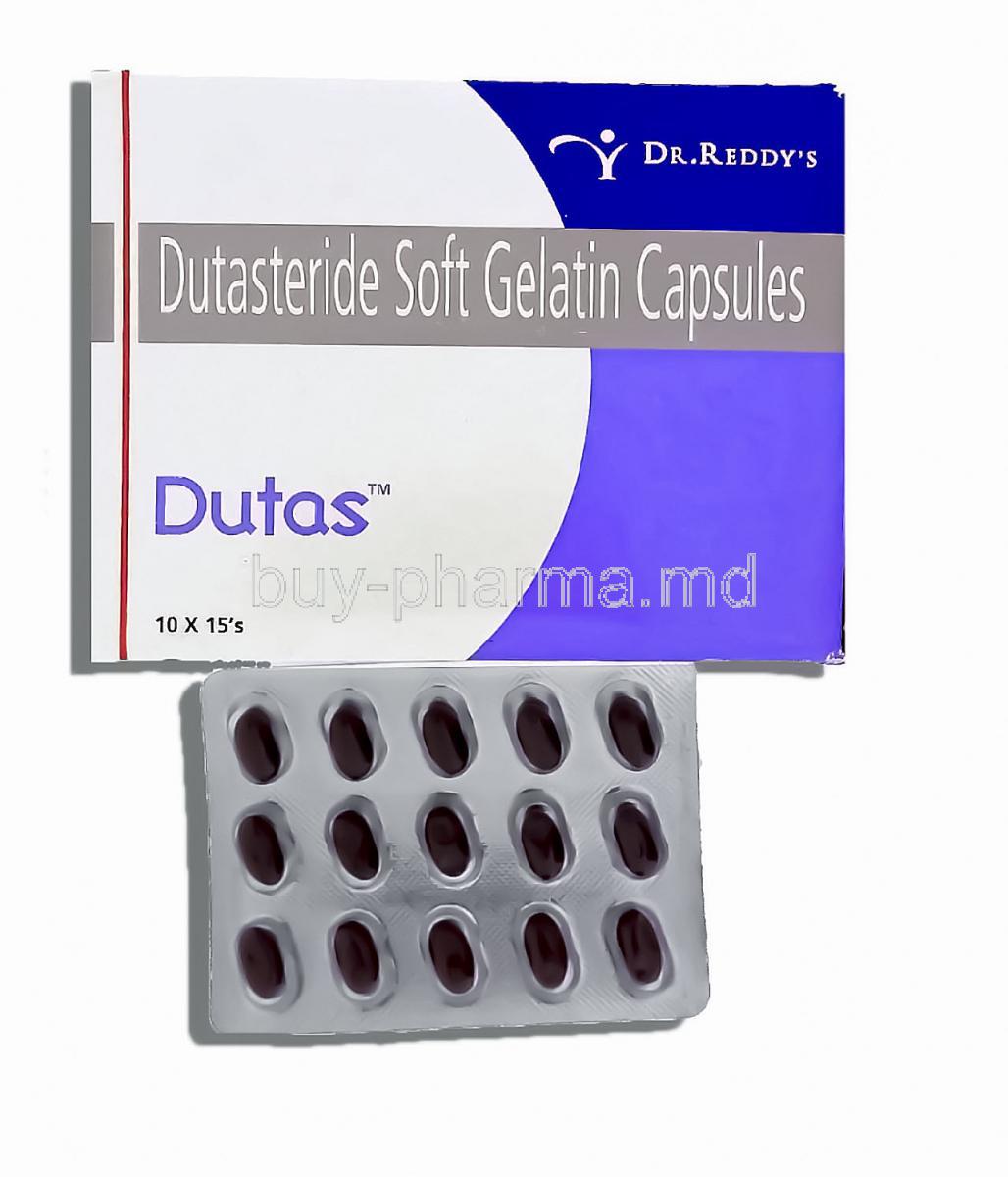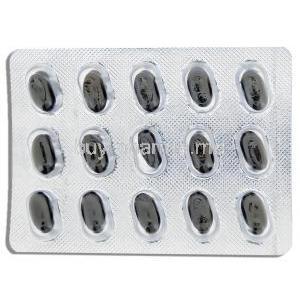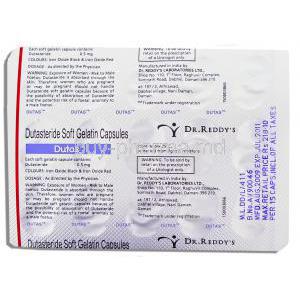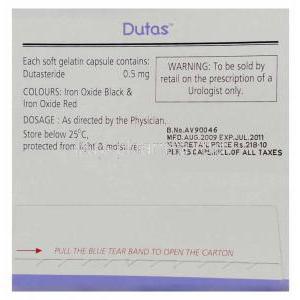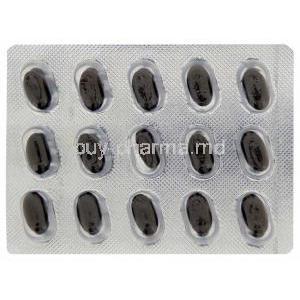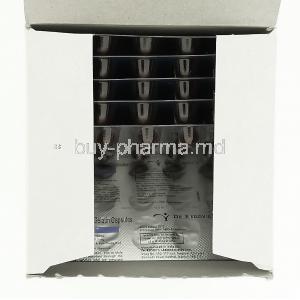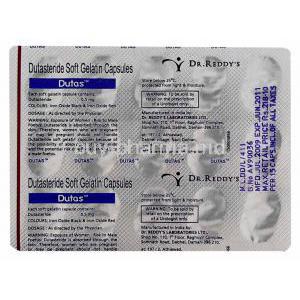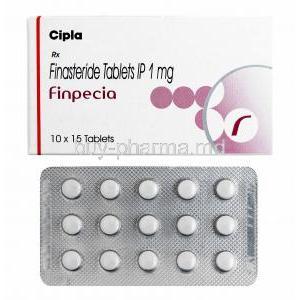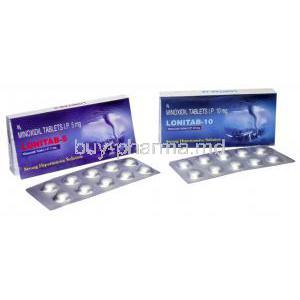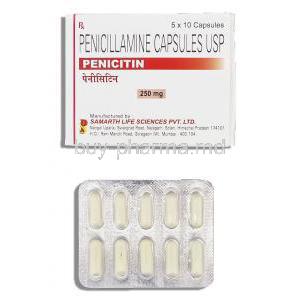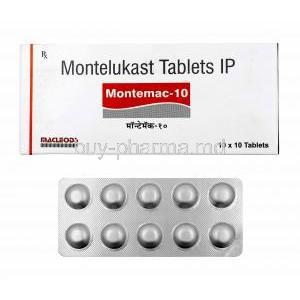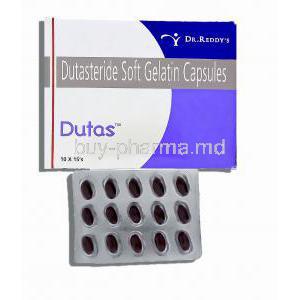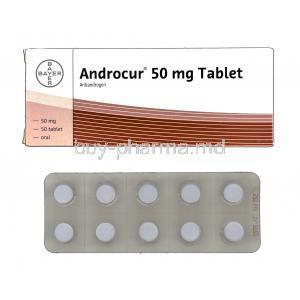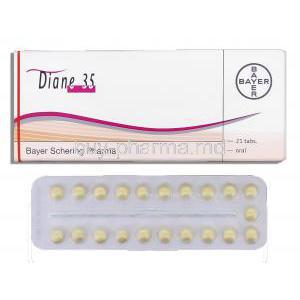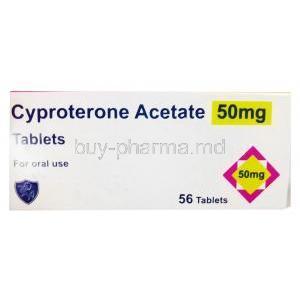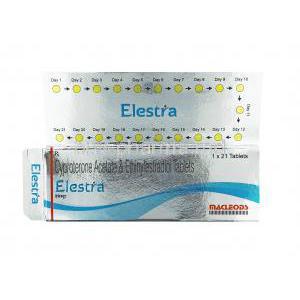Introduction to Dutas (Dutasteride 0.5 mg)
Dutas is an oral, once-daily medication engineered to modulate androgen metabolism at its enzymatic source. It is designed for sustained systemic exposure. Results accrue gradually yet meaningfully.
- Capsule formulation for reliable bioavailability
- Long plasma half-life supporting steady-state suppression of dihydrotestosterone (DHT)
- Clinically validated improvements in lower urinary tract symptoms
Overview of Dutas as a pharmaceutical product
A second-generation 5-alpha-reductase inhibitor, Dutas targets dual isoenzymes to decrease intraprostatic and circulating DHT. The effect is structural and symptomatic. Prostate volume declines. Urinary flow improves. Quality of life follows.
Therapeutic classification: 5-alpha-reductase inhibitor
Pharmacotherapeutic group: agents for benign prostatic hyperplasia. Mechanistic focus: competitive, potent blockade of steroid 5-alpha-reductase types I and II. The outcome is marked attenuation of DHT-mediated signaling in androgen-dependent tissues.
Brief history and development of dutasteride
Developed through rational enzyme-inhibition programs, dutasteride advanced after first-generation selective inhibitors demonstrated clinical proof of concept. Dual-isoenzyme coverage was pursued to enhance magnitude and consistency of DHT suppression across tissues.
Marketed uses and regulatory approvals worldwide
Widely authorized for benign prostatic hyperplasia (BPH), with labeling that may vary by jurisdiction. Many markets recognize benefits on symptom indices, risk reduction of acute urinary retention, and decreased need for surgical intervention. Combination therapy approvals with alpha-blockers exist in several regions.
Composition and Formulation
Precision-filled soft gelatin capsules ensure dose uniformity and chemical stability. The lipidic fill optimizes solubilization of the lipophilic active.
Active ingredient: Dutasteride 0.5 mg
Each capsule contains 0.5 mg dutasteride, a synthetic 4-azasteroid with high affinity for both 5-alpha-reductase isoforms.
Available dosage forms and strengths
- Soft gelatin capsules: 0.5 mg
- Unit-dose blisters and multi-blister cartons for adherence tracking
Inactive ingredients and excipients
Typical excipients include lipid-based solvents and stabilizers within the fill, plus gelatin, glycerol, and coloring agents for the shell. Excipients may vary by manufacturer; consult the specific product label.
Packaging and branding variations
Multiple pack sizes accommodate chronic therapy. Tamper-evident features, clear lot/expiry markings, and patient information leaflets are standard.
Mechanism of Action: How Dutasteride Works
Testosterone converts to DHT via 5-alpha-reductase. DHT possesses greater androgen receptor affinity and drives prostatic growth and follicular miniaturization. Interrupt the conversion; blunt the downstream biology.
Role of 5-alpha-reductase enzyme in testosterone metabolism
Two principal isoenzymes—type I (skin, liver) and type II (prostate, hair follicles)—catalyze 5-alpha reduction. Their combined activity sustains tissue DHT pools.
Inhibition of type I and type II isoenzymes
Dutasteride binds both isoforms with subnanomolar potency, producing profound and sustained enzyme occupancy. Dual blockade yields more comprehensive DHT suppression than selective inhibition alone.
Reduction of dihydrotestosterone (DHT) levels
- Serum DHT typically reduced by over 90% at steady state
- Marked intraprostatic DHT decline supports volume regression
- Testosterone may rise modestly within normal physiological range
Physiological effects on prostate size and hair follicles
Lower DHT attenuates prostatic epithelial proliferation, shrinking gland volume and relieving urethral compression. In scalp follicles, reduced DHT lowers miniaturization signaling.
Approved Medical Uses of Dutas
Primary indication: management of BPH in adult men. Benefits span symptomatic relief and disease modification.
Treatment of benign prostatic hyperplasia (BPH)
Indicated to improve urinary symptoms, increase peak flow, and reduce the risk of progression. Structural changes underlie symptomatic gains.
Symptom relief and improved urinary flow
- Decreased International Prostate Symptom Score (IPSS)
- Enhanced maximum urinary flow rate (Qmax)
- Reduced nocturia and urgency episodes for many patients
Reduction of prostate size
Progressive volume contraction emerges over months. Maximal effects often manifest by 6–12 months, with continued benefit thereafter.
Lowering risk of acute urinary retention and surgery
By curbing progression, dutasteride diminishes the probability of catheterization and invasive procedures related to BPH complications.
Use in combination therapy with alpha-blockers
Co-administration with agents such as tamsulosin delivers rapid symptom relief (alpha-blocker) plus long-term disease modification (dutasteride). A complementary, additive strategy.
Off-Label Uses of Dutasteride
Prescribers may consider evidence-informed uses beyond BPH where DHT modulation is biologically relevant.
Treatment of androgenetic alopecia (male pattern hair loss)
- Potent DHT suppression confers scalp follicle protection
- Used when alternatives are insufficient or not tolerated
- Dosing mirrors BPH labeling in many practices; monitoring remains prudent
Management of hirsutism in women
Occasional specialist use under strict precautions. Teratogenic risk mandates robust contraception and handling safeguards. Not routinely recommended without endocrinology/dermatology oversight.
Potential role in prostate cancer prevention (research-based)
DHT reduction plausibly mitigates low-grade carcinogenesis. Clinical data are nuanced, with debates regarding grade distribution. Any risk-benefit discussion should be individualized.
Investigational use in transgender hormone therapy
Sometimes explored to augment androgen blockade strategies. Multidisciplinary care and careful monitoring are essential.
Dosage and Administration Guidelines
Consistency matters. Daily intake at the same time fosters stable pharmacokinetics and adherence.
Standard recommended dosage for BPH
0.5 mg orally once daily, swallowed whole. Do not chew or open capsules.
Duration of therapy and time to clinical effect
- Symptom relief: often evident within 3–6 months
- Maximal prostate volume reduction: commonly by 6–12 months
- Chronic therapy may be required to maintain benefits
Use in combination with tamsulosin or other agents
Fixed or free combinations are used to pair rapid symptomatic improvement with long-term remodeling. Monitor blood pressure when initiating alpha-blockers.
Missed dose instructions
If a dose is missed, take it when remembered unless close to the next dose. Do not double the dose.
Practical tips for patient adherence
- Set daily reminders or pair dosing with a routine event
- Maintain monthly blister calendars to visualize adherence
- Schedule periodic follow-ups for symptom scoring and PSA checks
Side Effects of Dutas (Dutasteride 0.5 mg)
Adverse reactions are usually mild to moderate and may attenuate with continued therapy. Some effects can persist after discontinuation.
Common Side Effects
Decreased libido and sexual dysfunction
Reduced sexual desire may occur, particularly during early months. Dose is fixed; management emphasizes expectation setting and monitoring.
Erectile dysfunction
Occasional erectile difficulties arise due to diminished androgenic signaling. Lifestyle factors, comorbidities, and concomitant drugs can modulate risk.
Ejaculation disorders
Altered ejaculate volume or delayed ejaculation may be reported. Typically reversible, though persistence is documented in a minority.
Breast tenderness or enlargement
Mastalgia or gynecomastia can develop. Evaluate promptly if nodularity, unilateral changes, or discharge occurs.
Less Common Side Effects
Dizziness and headache
Usually transient and self-limiting. Hydration, sleep hygiene, and review of concomitant therapies may help.
Gastrointestinal disturbances
Dyspepsia, nausea, or abdominal discomfort can occur. Taking the dose at the same time daily may reduce variability in tolerance.
Skin reactions (rash, itching)
Hypersensitivity-type dermal findings are infrequent. Discontinue and evaluate if progressive or systemic features appear.
Serious Adverse Reactions
Risk of high-grade prostate cancer
Androgen suppression may alter grade distribution in biopsy detection. Ongoing clinical vigilance is warranted. PSA interpretation requires therapy-adjusted thresholds.
Severe allergic reactions
- Angioedema, urticaria, or anaphylactoid presentations are rare but urgent
- Immediate medical attention is required for airway compromise or systemic involvement
Mood changes and depression
Reports include depressive symptoms and reduced motivation. Screen for mood changes during follow-up and address promptly with supportive care or specialist referral.
Drug Interactions
Dutasteride, as a potent 5-alpha-reductase inhibitor, can be influenced by other medications through hepatic enzyme modulation and pharmacodynamic overlap. Awareness of these interactions is essential for safe therapeutic use.
Interactions with CYP3A4 inhibitors and inducers
Dutasteride is extensively metabolized via the cytochrome P450 3A4 pathway. Strong CYP3A4 inhibitors such as ketoconazole, ritonavir, or itraconazole may elevate systemic levels, increasing the potential for adverse events. Conversely, enzyme inducers like rifampicin, carbamazepine, or phenytoin may reduce efficacy by accelerating metabolism. Clinical monitoring and dose adjustments may be required when such agents are co-administered.
Combination with alpha-blockers: risks and benefits
Concurrent use with alpha-blockers such as tamsulosin provides additive benefits in relieving lower urinary tract symptoms. However, risks include:
- Orthostatic hypotension and dizziness
- Potential syncope in susceptible patients
- Need for gradual titration and blood pressure monitoring
Impact on prostate-specific antigen (PSA) test results
Dutasteride reduces serum PSA levels by approximately 50% after 6 months of therapy. This pharmacological effect complicates the interpretation of PSA as a biomarker for prostate cancer detection. Clinicians must adjust the observed PSA values to estimate the actual baseline levels.
Potential interactions with anticoagulants and antihypertensives
Although no direct interactions are conclusively established, co-administration with anticoagulants such as warfarin or antiplatelet agents warrants vigilance due to potential hepatic metabolism overlap. Similarly, concomitant use with antihypertensives may amplify hypotensive effects when combined with alpha-blockers.
Warnings and Important Precautions
Certain risks accompany dutasteride therapy, necessitating vigilance and patient education.
Risks of long-term use and cancer considerations
Clinical studies suggest a reduced incidence of low-grade prostate cancer but a possible higher detection of high-grade tumors. Regular surveillance and individualized risk assessment are advised.
Sexual side effect persistence after discontinuation
Reports indicate that decreased libido, erectile dysfunction, or ejaculatory disorders may persist in some patients even after cessation of therapy. Patients should be counseled accordingly.
Blood donation restrictions during and after treatment
Men taking dutasteride should not donate blood during therapy and for at least 6 months after discontinuation, due to the risk of fetal exposure if transfused to a pregnant recipient.
Handling precautions for women of childbearing potential
Capsules should not be handled by women who are pregnant or planning pregnancy. Dutasteride can be absorbed through the skin, and fetal exposure may cause abnormalities of the external genitalia in male fetuses.
Contraindications
Dutasteride should not be used in certain populations due to safety concerns.
Known hypersensitivity to dutasteride or excipients
Patients with a documented allergy to dutasteride, other 5-alpha-reductase inhibitors, or capsule excipients should not take the medication.
Use in women (especially during pregnancy)
Dutasteride is contraindicated in women. Its teratogenic potential makes exposure during pregnancy particularly hazardous.
Pediatric population contraindications
The safety and efficacy of dutasteride in children have not been established. It is contraindicated in pediatric populations.
Careful Administration and Monitoring
Long-term therapy requires careful follow-up to ensure safety and therapeutic efficacy.
Monitoring prostate-specific antigen (PSA) levels
PSA should be measured at baseline and periodically thereafter. Any rise in PSA during treatment should prompt further evaluation for prostate malignancy.
Liver function assessment in long-term users
Dutasteride is hepatically metabolized, and impaired liver function can alter pharmacokinetics. Regular assessment is recommended in patients with known hepatic conditions.
Caution in patients with severe hepatic impairment
Because dutasteride undergoes extensive hepatic metabolism, caution is warranted in severe hepatic impairment, where exposure may be significantly increased.
Monitoring for psychological side effects
Some patients may experience mood changes, depression, or anxiety. Monitoring and prompt management of psychiatric symptoms are critical during therapy.
Use in Special Populations
Administration to Elderly Patients
The majority of patients with BPH are elderly. Dutasteride is generally well tolerated in this group, but caution is necessary.
- Safety profile remains consistent with younger adults
- No formal dose adjustment usually required
- Attention to polypharmacy is essential to avoid interactions
Administration to Pregnant Women and Nursing Mothers
Dutasteride is contraindicated in women of reproductive age. Specific considerations include:
- Teratogenic risks: Exposure during pregnancy may lead to male fetal abnormalities
- Absolute contraindication: Not indicated for women at any stage
- Accidental exposure: In case of contact with leaking capsules, wash immediately with soap and water
Administration to Children
Dutasteride has no therapeutic role in pediatric medicine. Lack of efficacy and safety data precludes its use.
Overdosage of Dutasteride
Reported cases and symptoms of overdose
Clinical reports of overdose are rare. High-dose exposure may intensify adverse effects such as gynecomastia, sexual dysfunction, or hepatic strain.
Emergency management and supportive treatment
No specific antidote exists. Treatment is symptomatic and supportive, with monitoring of vital signs and organ function.
Expected outcomes and prognosis
Given the long half-life of dutasteride, clearance is slow, but recovery is typically complete with appropriate management.
Storage and Handling Precautions
Recommended storage conditions (temperature, humidity, light)
Store at controlled room temperature (15–30°C), away from excessive humidity and direct sunlight.
Shelf life and expiration details
Check the product label for the expiration date. Do not use capsules beyond their stated shelf life.
Precautions when handling capsules (risk of absorption through skin)
Capsules should be swallowed whole and not crushed or chewed. If broken, avoid direct contact with skin, especially for women of childbearing age.
Safe disposal instructions
Dispose of unused or expired medication through pharmacy take-back programs. Do not discard in household waste or wastewater systems.

